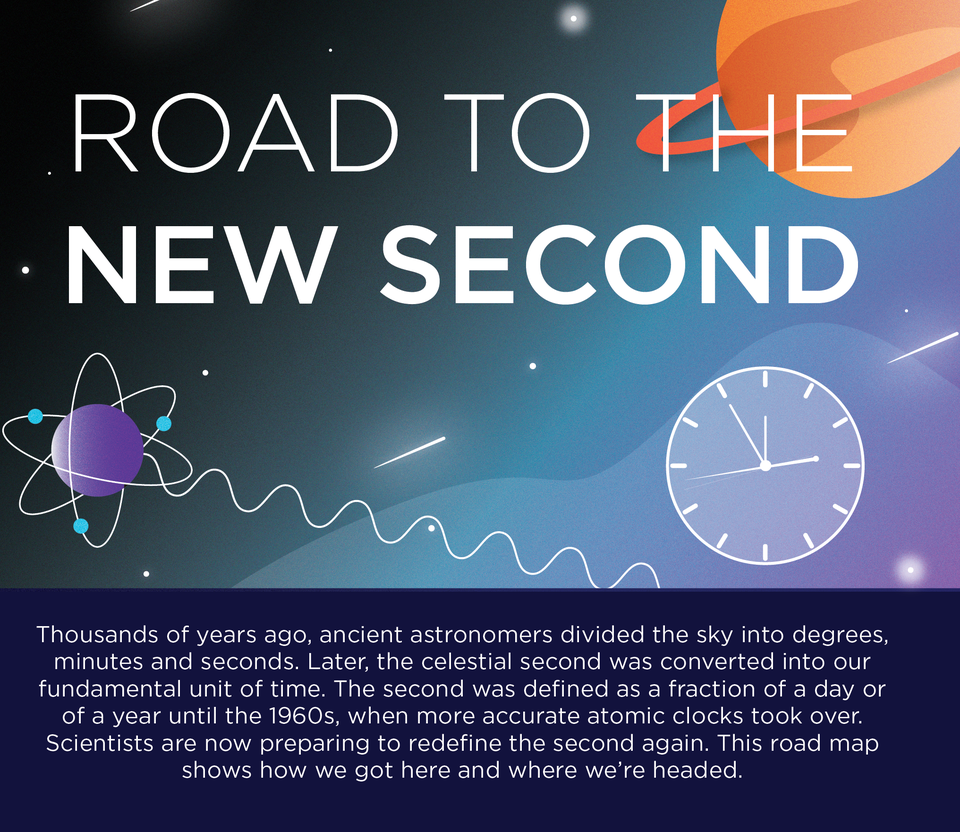Second: The Future
Next-generation atomic clocks promise to chop the second into much smaller parts, allowing unprecedented accuracy and precision. These clocks could usher in new technological capabilities and, physicists hope, a new era of high-precision experiments.
Making these advances will mean moving beyond cesium, the timekeeping workhorse of the last half-century. The cesium fountain clocks that define the second today are based on microwave frequencies absorbed and emitted by cesium atoms that have been excited with microwave energy. The microwave cycles can be counted and interpreted as “ticks” marking fractions of a second.
In the past two and a half decades, NIST scientists and others have been building “optical clocks” based on atoms such as strontium and ytterbium and ions such as mercury and aluminum that can split the second into chunks up to a hundred thousand times smaller.
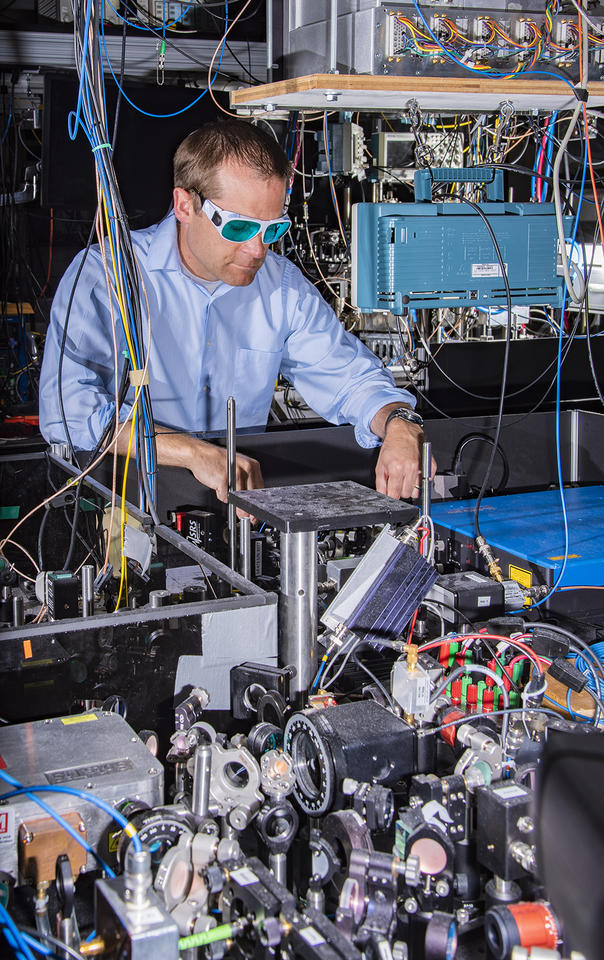
Optical atomic clocks emit frequencies of light tens of thousands of times higher than the microwave frequencies emitted by cesium atoms. Like a ruler with finer tick marks, optical clocks divide time into smaller bits and could ultimately be 1,000 times more accurate and stable than cesium clocks. (They are currently 100 times more accurate than today’s best cesium clocks.)
A key advance that made optical atomic clocks possible was the frequency comb, the development of which earned NIST Fellow Jan Hall a share of the 2005 Nobel Prize in Physics. Frequency combs produce very finely separated colors of light, which can be used not only to precisely energize the atoms in an optical clock but also to translate such clocks’ ultra-high (trillions of cycles per second, or terahertz) optical frequencies to lower frequencies that can be counted using conventional electronics.
NIST’s first all-optical atomic clock using a frequency comb was built in 2001 and based on a single mercury ion. In 2010 NIST's quantum logic clock, based on a single aluminum ion, outperformed the mercury ion clock’s accuracy by about a factor of two, reaching an uncertainty that would correspond to neither losing nor gaining a second in 3 billion years. Since then, NIST’s aluminum-based optical clocks have lowered their uncertainties by another factor of 10. Aluminum is much less sensitive to thermal effects than are most other atoms that have been studied, allowing for a very precise accounting of clock frequency corrections.
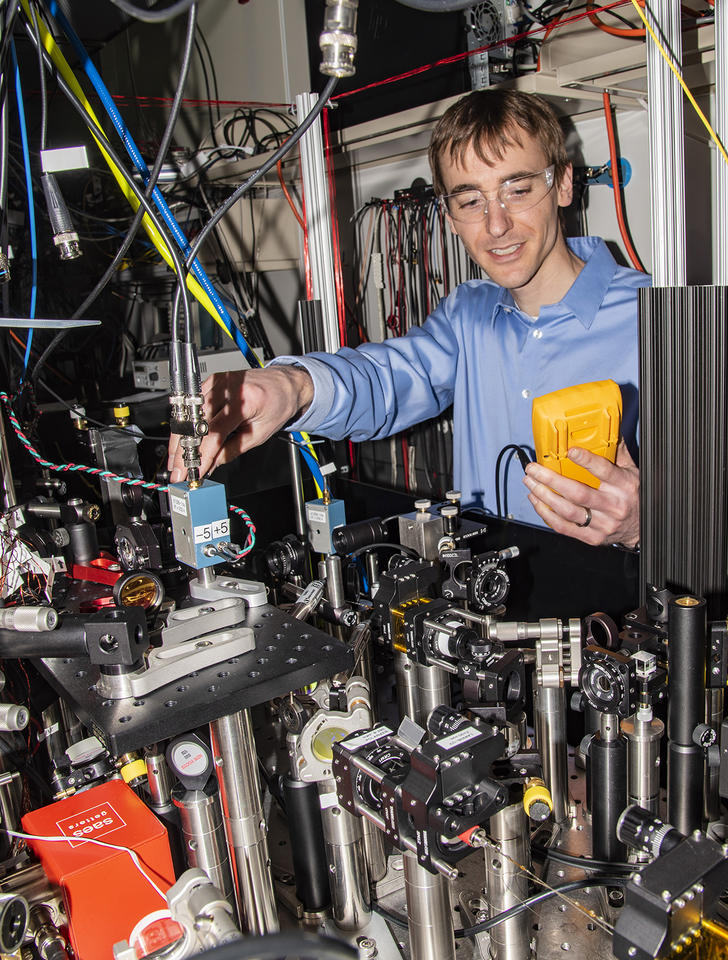
Optical “lattice clocks,” which embed ultracold ytterbium or strontium atoms in a matrix of laser light — think of eggs resting in an egg carton — are also achieving stunning levels of performance. Because lattice clocks allow scientists to probe thousands of atoms at once, they can perform precision measurements much faster than single-ion clocks. This allows scientists to validate the clock performance over shorter time periods and perform precision studies of the clock frequencies. NIST’s lattice clocks would not have gained or lost a second had they started running at the Big Bang, roughly 13.8 billion years ago.
In 2022, the CGPM voted to redefine the second in the International System of Units using optical clocks. The international standards community is now working toward adopting a new standard by 2030. National metrology institutes like NIST are working to fulfill a set of criteria and conditions that the international community has agreed must be met before a redefinition can occur. For example, optical clocks must be shown to be accurate to levels of uncertainty equivalent to losing less than a second over 16 billion years, and these accuracies must be validated by at least three metrology institutes with agreement at an uncertainty level equivalent to losing less than a second over 6 billion years. And International Atomic Time, the global time scale set by atomic clocks, must be calibrated by at least three different optical clocks each month.
NIST has been contributing toward progress on several of the required criteria and conditions. NIST’s three best atomic clocks have reported accuracies better than the level required by the redefinition criteria. NIST has also published optical frequency ratios that are very near the goal established by the mandatory criteria. Measuring optical clocks’ frequency ratios validates the performance of optical clocks at uncertainty levels much lower than what can be achieved by comparing an optical clock to a cesium clock. The ratios also help compare optical clock measurements in different countries around the world without having to transfer optical clock signals over large distances. And NIST has built a portable ytterbium optical lattice clock that researchers can take to other metrology labs to compare its performance with that of other atomic clocks.
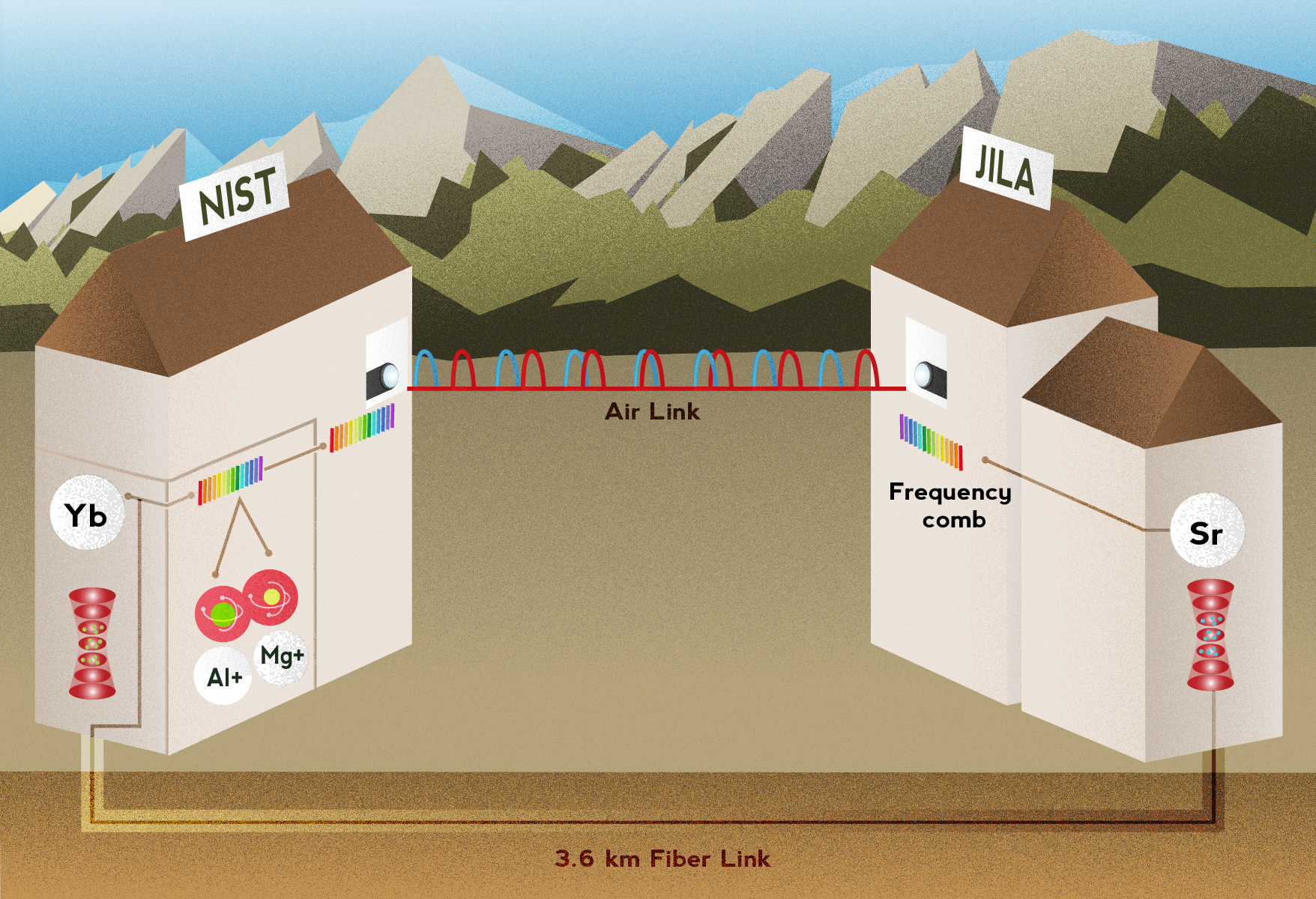
NIST’s ytterbium optical lattice clocks have also begun to provide frequency calibrations of International Atomic Time that serve as official “secondary” representations of the SI second, alongside the “primary” calibrations provided by cesium clocks against which the second is currently defined. Since 2018, NIST has submitted 12 optical clock calibrations to the BIPM.
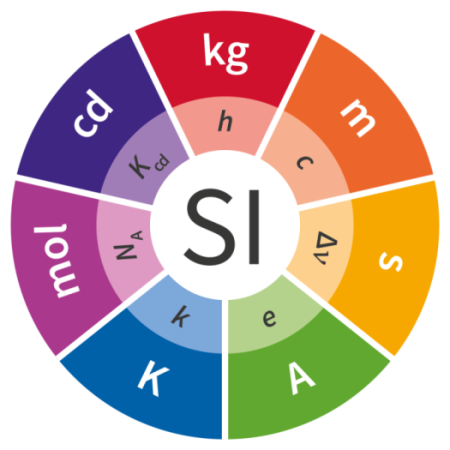
Even though optical clocks are already beating cesium-based microwave clock accuracies by a factor of 100, it will take time to implement a formal redefinition of the second. Currently, there is no consensus on which atom (or atoms) to base the new definition on. The redefinition could ultimately be based on an ensemble of multiple optical atomic frequencies — for example, a combination of ytterbium, strontium and lutetium atoms as well as aluminum, strontium and ytterbium ions — so that new clocks based on other atoms and ions can contribute without requiring another redefinition.
The committee aims to lay out a set of options by 2026. After that, scientists will study the options and make recommendations. If all goes as planned, countries will vote on a formal redefinition by 2030.
In the meantime, scientists at NIST and elsewhere keep pushing to make their clocks as accurate, precise and stable as possible. Why do we need to keep building better and better atomic clocks? Some of the reasons are practical. The better these clocks get, the more precisely we can know where we are. Ultraprecise atomic clocks could also help detect earthquake faults and mineral deposits, more precisely measure the shape and gravity of the Earth, and synchronize signals in a "quantum internet" that would link quantum computers and devices over large distances.
But the biggest beneficiary of the next generation of clocks may be science itself. NIST’s Jun Ye explains in this video from 2022 how atomic clocks could serve as hypersensitive gravity sensors for monitoring volcanoes and glaciers. They are also opening up new ways for physicists to test predictions made by general relativity and quantum theory, detect new particles that could reveal what dark matter is made of, and test profound hypotheses in fundamental physics — such as the possibility that certain “constants” of nature are not actually constant at all.
One thing is certain: Each time scientists find a way to better define the second, a host of new capabilities emerge — many of which could not be foreseen ahead of time. The new redefinition will surely be no different.


